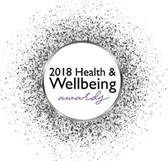|
Our lives are generally noisy and busy, with constant distractions coming from all directions. At work people are often chatting and on the phone, the tapping of keyboard keys, radios and TVs, traffic and so on. Silence is hard to come by except perhaps at night once we go to bed (if we are lucky enough to live somewhere quiet!). People often say they can't hear themselves think. Many people are so un-used to silence that they find it awkward, perhaps even uncomfortable and put background noise on to keep it at bay.
This Wednesday is an international day to celebrate silence. Just this day is trying to remind us that silence is something to be valued and to bring in to our lives more often. The Big Shhhh aims to spread stillness and to unite us. Why? you may ask, in this age of achievement, what will it get me? Silence can be a chance to get to know yourself, to listen to yourself, and to allow the mind to reflect without the distraction of noise and without these distractions sapping our energy. It can be a chance to let go of negative distractions and allow happiness to emerge, and to refocus and remain grounded. But of course, silence isn't necessarily easy, and when starting out, is impossible for some people. Once you stop physically, and listen to yourself, you realise there is a lot going on that you may have either missed before, or even actively avoided if what you find isn't comfortable to you. What might remain if you stop the noise around you? Spending time in silence, once you find yourself able to physically stop, can be a revelation. Meditation is usually taken in silence, and yoga is usually taken with only the sound of your breathing, movements if practicing asana (postures), and perhaps the sound of the teachers voice if in a group yoga class. These days some yoga classes even include background music, or uplifting music, to keep the body moving and the mind focused on the practice. It takes discipline and effort to remain silent, and to remain still. Very difficult for some and something that only regular practice and supportive guidance will help. Silence crosses disciplines and is found at the core of yoga and meditation and also in church and prayer. Once you are able to find silence, what will you find there? An open question, and only one way to find out... Back to homepage
0 Comments
Friday evening and YogaSpace is full with almost 30 people celebrating the new yoga centre in Bristol. Paul Harvey, a deeply knowledgeable yoga teacher and my teacher for almost 5 years led the evening which included a wide range of students from experienced yoga teachers to interested beginners.
Paul led us through discussions about yoga, some yoga practices, chanting and amusing anecdotes about his time in India with some of the great teachers over the past 30 years or so. The discussions were focused around body, breath, mind and beyond, leading us into the more mystical aspects of yoga. He started with discussions about Hatha yoga as body and energy work, using yoga as a starting point for physical health. Then leading in to ideas about breathing (pranayama) with specific techniques to aid our mental clarity and concentration. We discussed the concept of 'prana' or energy, the 'glue' that gives us life. Who knows what prana actually is, science doesn't quite define yet or describe it yet either, but something in us is our undefinable life force, stronger and more vital in some than in others, energy that is variable from day to day that can't be described in chemical or scientific terms. (An interesting illustration of the elusive concept of prana is 'chronic fatigue syndrome', very real for many people, no currently understood medical cause or treatment, and the yoga model considers this to be an issue with prana or our life force.). In yoga the breath is used to influence prana so a great deal of emphasis is put on the breathing as we take postures (asana) and then as we learn to sit and just 'breathe' as we refine and deepen our yoga practice. Asana are often used for fitness and flexibility but were traditionally intended to help us strengthen the body and give support and length to the spine, the central channel in the body which provides us with the ability to sit, breathe well, and ultimately to meditate well without the body causing a distraction by aching after 5 minutes! Good asana practice leads to good energy, prana/apana and chakra health. The secondary purpose of good asana practice is to refine the rest of the body, for good structural and systemic health. We took a crash course in chanting some sanskit chants. 'Yogena yogo' helped to take us out of our normal frame of mind, perhaps we found it uncomfortable or odd, perhaps we enjoyed the sounds and the group integration into one voice and the focus needed to listen and then repeat the different sanskit sounds. Either way, we felt different when the chanting was finished, and isn't that part of the point of yoga, to help us see things slightly differently and explore our reaction to resistances in our body and mind. We talked about pranayama, the practice of controlling the breathing in different ways, a discipline often not taught in a group yoga class. We discussed the use of breath in asana to help develop a long, sustained, smooth breath so that when we practice pranayama, we have a trained breath with stamina that we can then work with. A Sivananda teacher raised an interesting point that in the Sivananda yoga tradition she was studying, they are advised not to teach pranayama unless the student has a pure body free from meat and alcohol, otherwise pranayama would be worse for you than not doing it at all. As Paul discussed this with her, he referred to the origin of the teaching which has Hindu principal's at it's heart. Sivananda brings a Hindu interpretation to yoga, coming from a Vedanta tradition, and blends yoga and Hindu teachings. The 'Yoga Sutras', a seminal and ancient yoga text by Patanjali which is studied and respected by most who teach yoga, don't mention being vegetarian or the requirement of purity before learning pranayama. There wasn't disagreement that this was a good thing, just a clarification of where the teaching was coming from and understanding of what Yoga teaches us and what religion teaches us. Yoga can be interpretted without any religious influence as a set of practices for health and transformation and Patanjali is careful not to include religion in his teachings, even though it was written over 2,000 years ago. We took some group asana practice before having a break and coming back to a discussion about Raja yoga. The focus now moved on the the mind and beyond. Yoga classes that teach asana are often for its own fitness purposes, but it was traditionally taught to ultimately train the mind. Asana and pranayama are used to provide us with a stable mind and body with the intention to prepare us for meditation and ultimately a connection with something beyond ourselves. Reflection and meditation require discipline, which requires training and preparation to be able to effectively practice these. As death looms closer for us in our later years, an enquiry into what might lie beyond death drives many to religion, or it can lead to reflective meditation and an enquiry into what life is all about and perhaps exploring something in us that might be permenant and beyond death. Or it might lead to busy, full lives full of activities and friendships that help us avoid thinking about death at all! Meditation allows space to explore or to just 'be' and ultimately not worry about it... I left the evening feeling that YogaSpace had been filled with teachings that got right to the heart of yoga. The warmth of the group and the good wishes from Paul for the new yoga centre were an inspiration to me and to YogaSpace. And we raised £235 for the Julian Trust Night Shelter! Thanks to everyone who came, to Paul for being so generous with his time and his teachings, and for making the evening such a special and memorable event. Next Friday evening should be a wonderful event as we're honoured to have Paul Harvey at the studio. He is a great teacher and one of the foremost authorities in Yoga and will lead us through an evening exploring body, breath, mind and beyond. All are welcome and entry is a £10 donation to support the Julian Trust Night Shelter, a Bristol-based charity.
The evening will offer an introduction to Yoga as body and energy work, psychology and mysticism through asana, pranayama, sound, and mantra. Through presentation and practice we will explore how Yoga postures, breathing and sound can lead to meditational stillness, along with discussion and time for your questions. Numbers are limited so please get in touch to book a space. Look forward to seeing you there! |
More blog articles >Categories
All
Archives
July 2024
|
|
Bristol YogaSpace Ltd
Princes Place, Bishopston Just off Gloucester Road Bristol BS7 8NP |
|


 RSS Feed
RSS Feed

